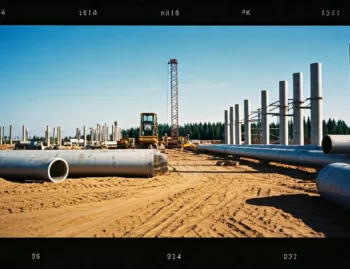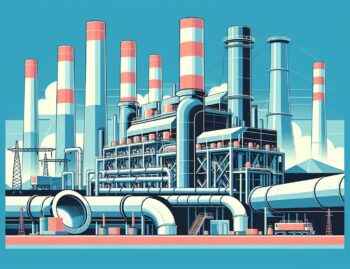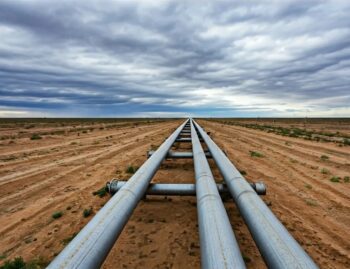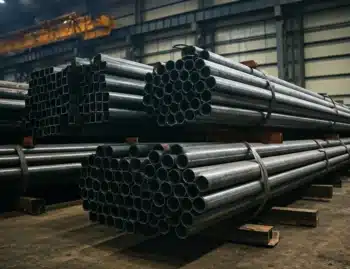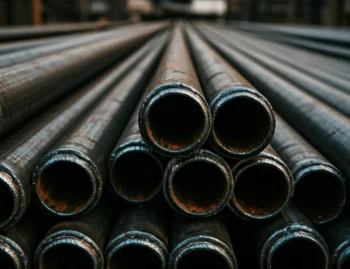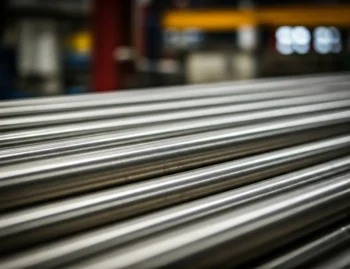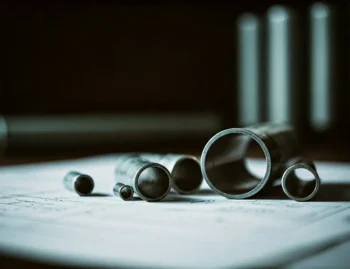
In the ever-evolving world of oil and gas, the choice of materials plays a pivotal role in ensuring safety, efficiency, and durability. Stainless steel pipes have become a preferred choice in this industry for numerous reasons. Let’s explore why these pipes stand out and are trusted across the globe.
1. Unmatched Durability and Strength
Stainless steel pipes are renowned for their exceptional durability and strength. This makes them ideal for withstanding high pressures and temperatures typical in the oil and gas industry, ensuring long-lasting performance. The ability to resist wear and tear under extreme conditions is one reason stainless steel outshines other materials. This resilience reduces the frequency of replacements and repairs, making it a cost-efficient option in the long run.
Moreover, stainless steel’s strength comes from its composition, which includes alloys like chromium and nickel. These components add to its hardiness and longevity, providing a pipe solution that can endure the most challenging environments. This property is particularly beneficial in offshore drilling, where pipes are subjected to harsh marine conditions.
2. Corrosion Resistance Advantage
One of the standout features of stainless steel is its resistance to corrosion. In environments where pipes are constantly exposed to chemicals and harsh conditions, this characteristic helps prevent leaks and maintains the integrity of the piping system. The addition of chromium in the steel’s composition forms a passive layer of chromium oxide on the surface, which blocks further corrosion without compromising the material’s elasticity and strength.
In oil and gas industries, where exposure to saline water and corrosive substances is frequent, having a material that can resist such adversities is crucial. This property not only ensures longevity but also enhances safety, minimizing the risks of leaks that could lead to catastrophic results.
3. Cost-Effectiveness Over Time
While the initial investment in stainless steel pipes may be higher, their long-term benefits, such as reduced maintenance and longer lifespan, make them more cost-effective in the long run. Stainless steel pipes require less frequent replacements and repairs compared to other materials, which translates into lower overall operational costs. This economic advantage is particularly noticeable in extensive pipeline projects where maintenance can be both costly and logistically challenging.
Moreover, the low maintenance needs of these pipes allow for continuous operation, critical for industries where downtime equates to financial loss. Investing in stainless steel can mean fewer interruptions in production, fostering enhanced business continuity and efficiency.
4. Ease of Maintenance
Stainless steel pipes require minimal maintenance, reducing downtime and saving on repair costs. This reliability is crucial in the demanding environments of oil and gas extraction and distribution. Unlike other materials that may require frequent checks and repairs, stainless steel demands less attention while delivering consistent performance.
Their smooth surface discourages debris accumulation, reducing one of the common maintenance headaches. This feature also contributes to maintaining the inside diameter of the pipe, ensuring efficient flow of substances, which is vital in high-pressure environments.
5. Eco-Friendly Option
These pipes are 100% recyclable, making them an environmentally friendly choice. The sustainability aspect aligns with the industry’s growing shift towards greener practices. By choosing stainless steel, companies not only invest in quality but also in environmental stewardship.
The process of recycling stainless steel is both efficient and effective, allowing for significant energy savings. By supporting the recycling economy, the industry can dramatically reduce its carbon footprint, making this a desirable option in an eco-conscious market.
6. Highly Fire and Heat Resistant
Stainless steel’s inherent resistance to fire and extreme heat conditions adds an extra layer of safety, especially crucial in oil and gas operations where fire risks are significant. Its ability to maintain structural integrity in high temperatures ensures that the system’s safety is uncompromised, even under unexpected conditions such as fire or overheating due to internal pressures.
Using stainless steel pipes can mitigate the risks associated with thermal expansion, which can be a challenge in non-metallic options. This property ensures that the pipework remains intact and functional, safeguarding against catastrophic failures.
7. Versatile Design and Application
Thanks to its flexibility, stainless steel can be shaped and molded into various forms, allowing engineers to design complex piping systems tailored to specific project needs. This adaptability is key in situations where customized solutions are required to navigate challenging spatial and operational constraints.
Whether it’s a straight-line transfer pipe or a convoluted network of tubes within a processing plant, stainless steel provides the versatility needed to meet exact specifications. Its ability to be welded and fabricated to tight dimensions ensures that innovative and efficient designs can be achieved with ease.
8. Minimal Contamination Risk
The smooth surface of stainless steel reduces the chance of contamination, ensuring that the transported materials remain pure and preventing any chemical reaction with the pipe material. This characteristic is essential in maintaining the quality of the substances being transported, which is particularly important in the transfer of sensitive materials.
This quality also translates into safety benefits, as it prevents potential harmful reactions that could compromise product integrity. Stainless steel’s non-reactive properties make it a preferred option for various chemical processes, ensuring that the purity of products is maintained from source to destination.
9. High Pressure Tolerance
These pipes can withstand significant pressure levels, a crucial feature required for the safe and efficient transportation of oil and gas products over long distances. Their robustness against high-pressure environments ensures reliable performance without the threat of ruptures or leaks, crucial for maintaining operational safety and efficiency.
Whether in subsurface oil fields or transporting natural gas across continents, stainless steel pipes handle pressure-related challenges better than most alternatives, preserving system integrity and avoiding disruptive and expensive failures.
10. Superior Weldability
Stainless steel pipes offer excellent weldability, allowing for strong joints and seamless integration within complex piping systems, ensuring reliability and structural integrity. The ability to create robust and leak-proof welds is essential for applications where high-strength joints are required.
This property is particularly valuable during installation and repair processes, as it allows for flexible adjustments without compromising the system’s overall strength and performance. High-quality weldability reduces the risk of weak points in the piping system, ensuring consistent and safe operations.
11. Resistance to Impact
The material’s impact resistance ensures that the pipes can endure rough handling, heavy loads, and accidental impacts without sustaining damage. This durability is critical in ensuring that the pipes remain functional and effective despite the physical challenges they face during transportation and installation.
For the oil and gas industry, where operations often involve rough terrain and heavy equipment, this property minimizes damage-related delays and costs. It ensures that the infrastructure remains intact and functional, avoiding unnecessary interruptions and enhancing project timelines.
12. Enhanced Aesthetic Appeal
The sleek and polished look of stainless steel adds a level of professionalism and quality to the infrastructure, appealing to companies prioritizing both function and form. Its aesthetic value is often a final nudge for industries keen on showcasing modern and advanced operations.
Beyond aesthetics, the polished surface also aids in reducing contamination and enhancing the cleaning process. This dual functionality ensures that stainless steel is not only a visually appealing option but also practical and efficient in its applications.


